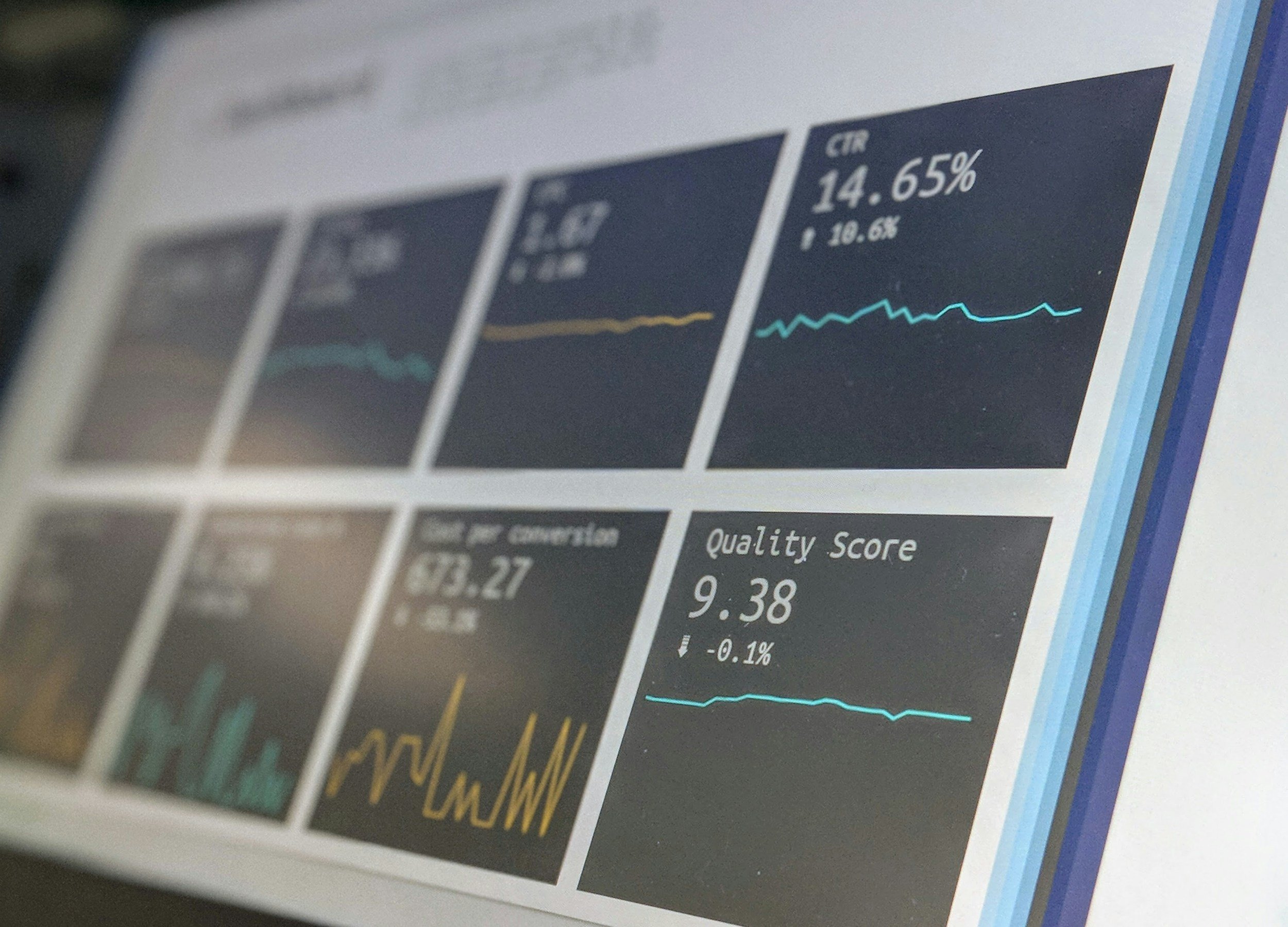
Project:
Product Manager Dashboard
Salesforce (Internal Project)
Overview & Objective
Salesforce currently has 4 different systems that provide Product feedback from the users themselves. These systems do not communicate with each other so Product Managers must sort through all systems. My task between projects was to design a dashboard that centralizes Salesforce customer feedback from multiple sources, enabling Product Managers to identify critical user feedback. Help the Product Manager prioritize based on volume and impact by providing information all 4 systems in one central place.
Business Context
Salesforce has four primary systems that collects feedback from all Salesforce products. My specific product that I based my designs off of was the Experience Product. If this dashboard would helpful, that would allow the rest of the the products have the same format. These systems include: Idea Exchange, VoC, Voice of Services, & Support Tickets. Idea exchange is a more established system where users can users can submit ideas for new features or improvements. Users can vote on these ideas, comment, and discuss them. Salesforce collects this data to identify popular requests and prioritize product development based on user feedback. However, the other 3 systems are less established, having little tracking such as notes from a meeting or direct feedback from a user. Collaborating all these feedback system insights on one page is an internal project that Salesforce hopefully someday plans to implement, however, there first must be a way to tie the systems together. Perhaps track user voice patterns, or common phrases mentioned and how often, etc.
Discovery & Research
During the discovery phase I studied the role of a Salesforce Product Manager and the priorities they have. Understanding the role allowed me to better understand what could be most effective for a Product Manager dashboard view. My goal was to have a dashboard that has insights that drive the PM to complete effective next steps in order to improve their product. This led me to do research on what a Product Manger does throughout the 8 hour workday. I also did research on the feedback systems to get a better understanding of who was inputing feedback and how each system gathered feedback. Eventually, I started doing block, and low-fidelity wireframes. I presented these wireframes to leadership with several iterations and adjustments based of their feedback before beginning the high-fidelity designs. Am example of a design iteration was to go from several tabs to one overview tab encompassing all systems. Eventually, I landed on a more detailed low fidelity wireframe plan, while also defining the project goal and defining preconditions. Below are some low-fidelity wireframes and notes taken during the research phase.
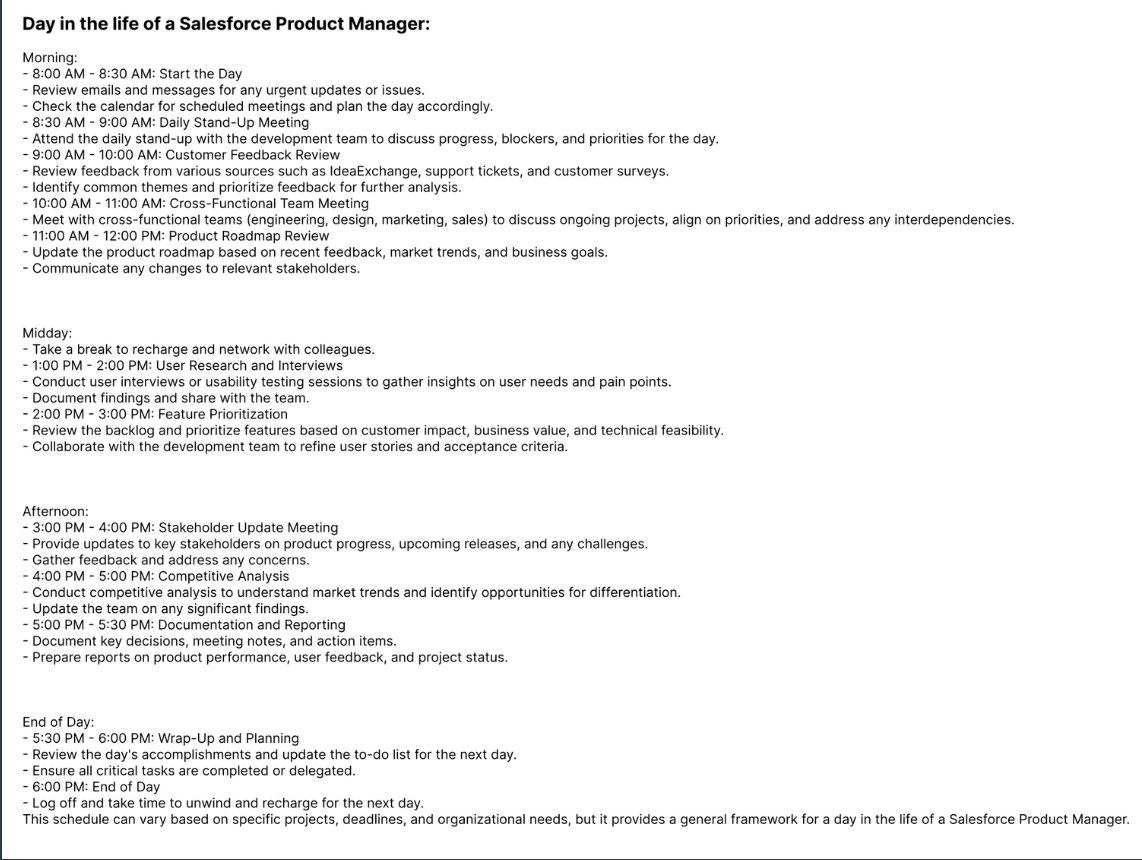



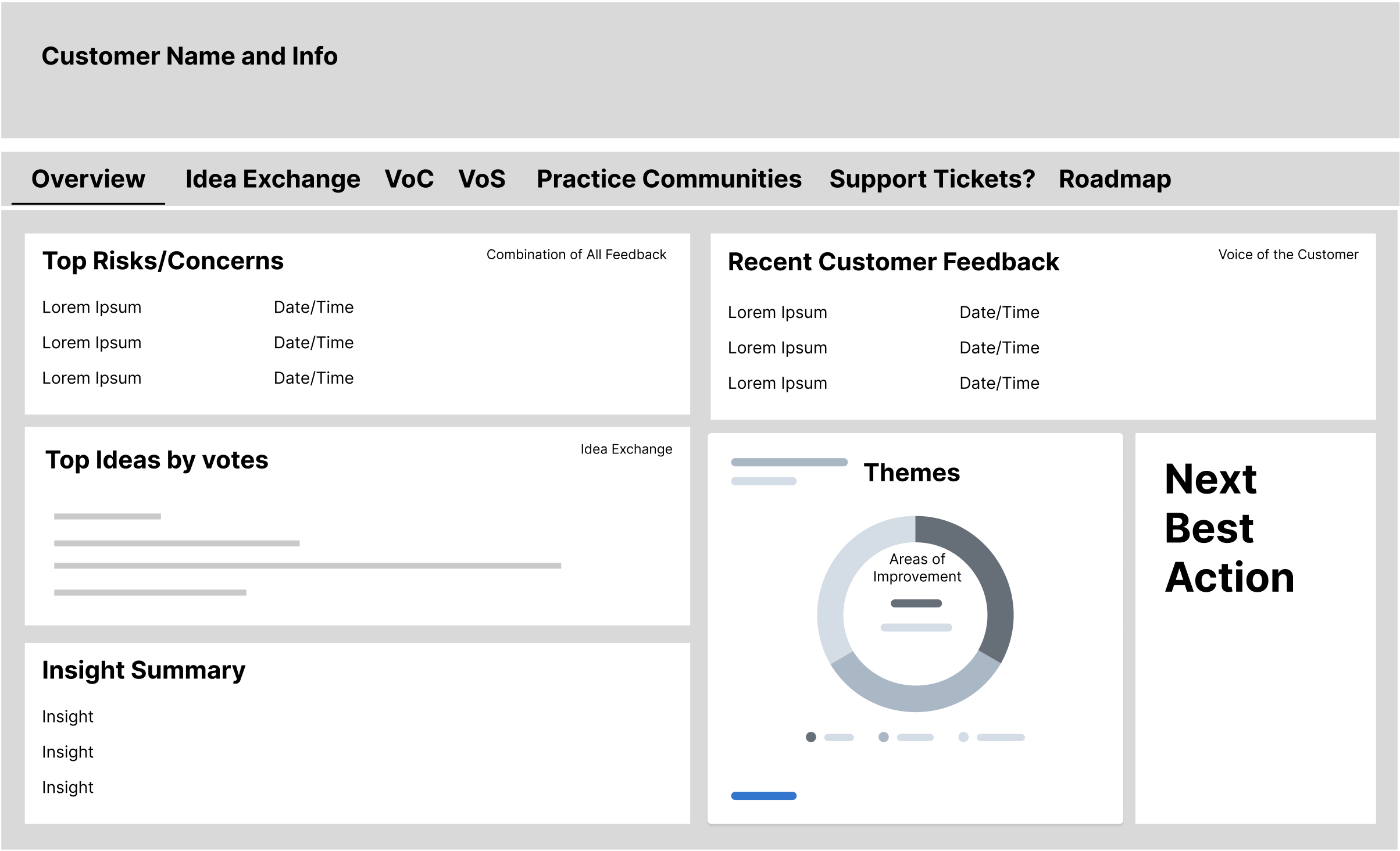

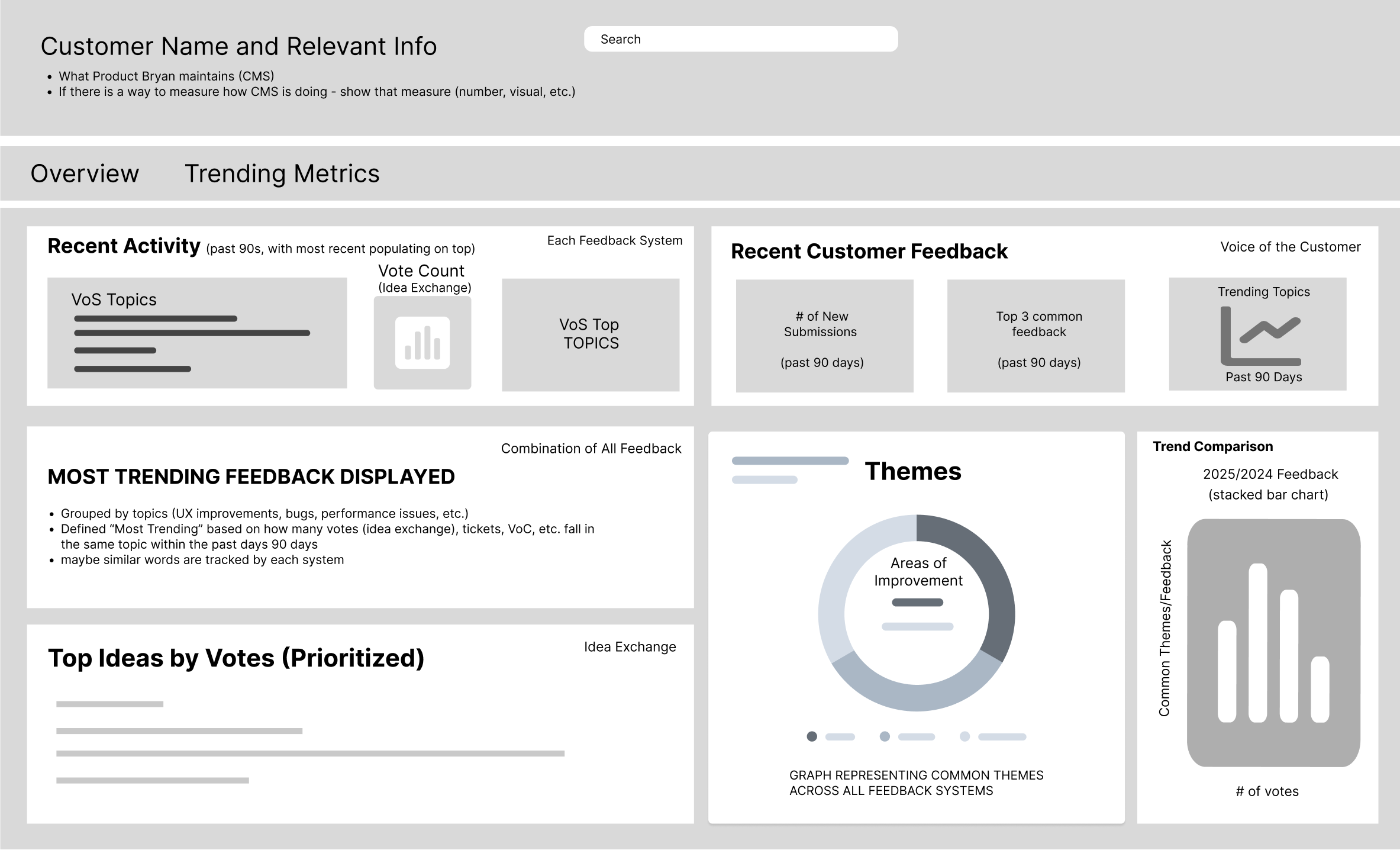

Design Iteration Stage
After doing research on the daily needs of a Product Manger, and understanding their responsibilities and needs, I created an outline of a character, Bryan Lee, meant to play the role of the product manager. I described the goal and outlined the project goal and overall purpose of the dashboard.
I then presented leadership with high-fidelity designs, and received positive feedback while still making adjustments to my final prototype design. Below are some high-fidelity iterations I made during the iteration stage, as well as an information slide on the user (Bryan Lee) and the goal of the dashboard
Challenges Faced
Given that this was an internal Salesforce project initiative, and I was a solo employee working on it. The way I typically navigate on a project is very different. Usually I am put on a team. Most members of my org were staffed on a project, or an already staffed internal initiative so I was not given access to a Technical Architect, Solution Architect, Developers, etc..
I was not able to gain access to information such as where some of the feedback was being stored, or how feedback from the different systems would eventually be able to integrate data systems together for a unified dashboard with the goal of aggregating all the most agreed upon feedback from all systems. I was in need of technical solutions and discussions but I was limited to reaching out to people who were Product Designers — who often did not have technical solutions to my questions, research online on for example how support tickets are tracked, and attempting to find SME’s.
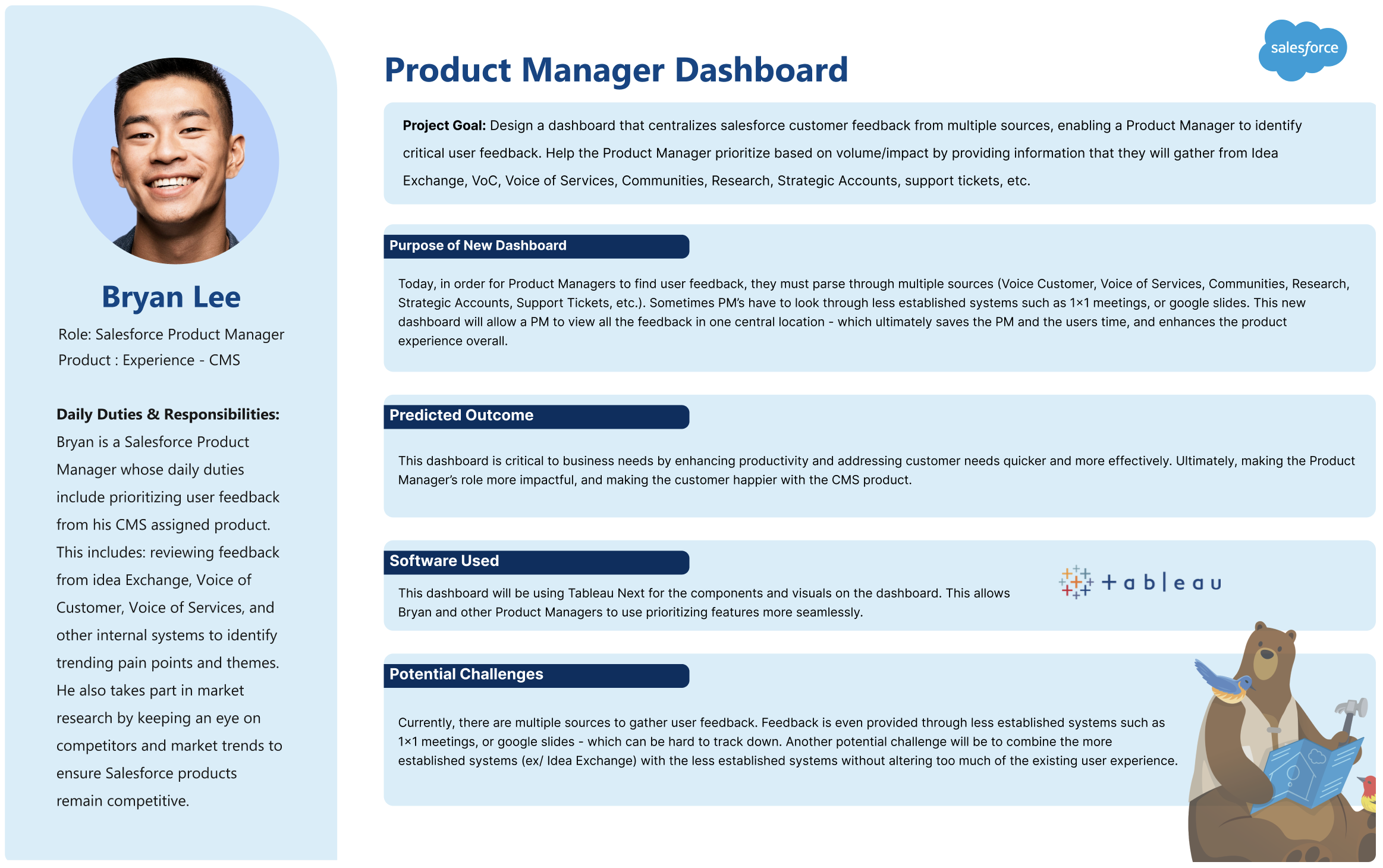


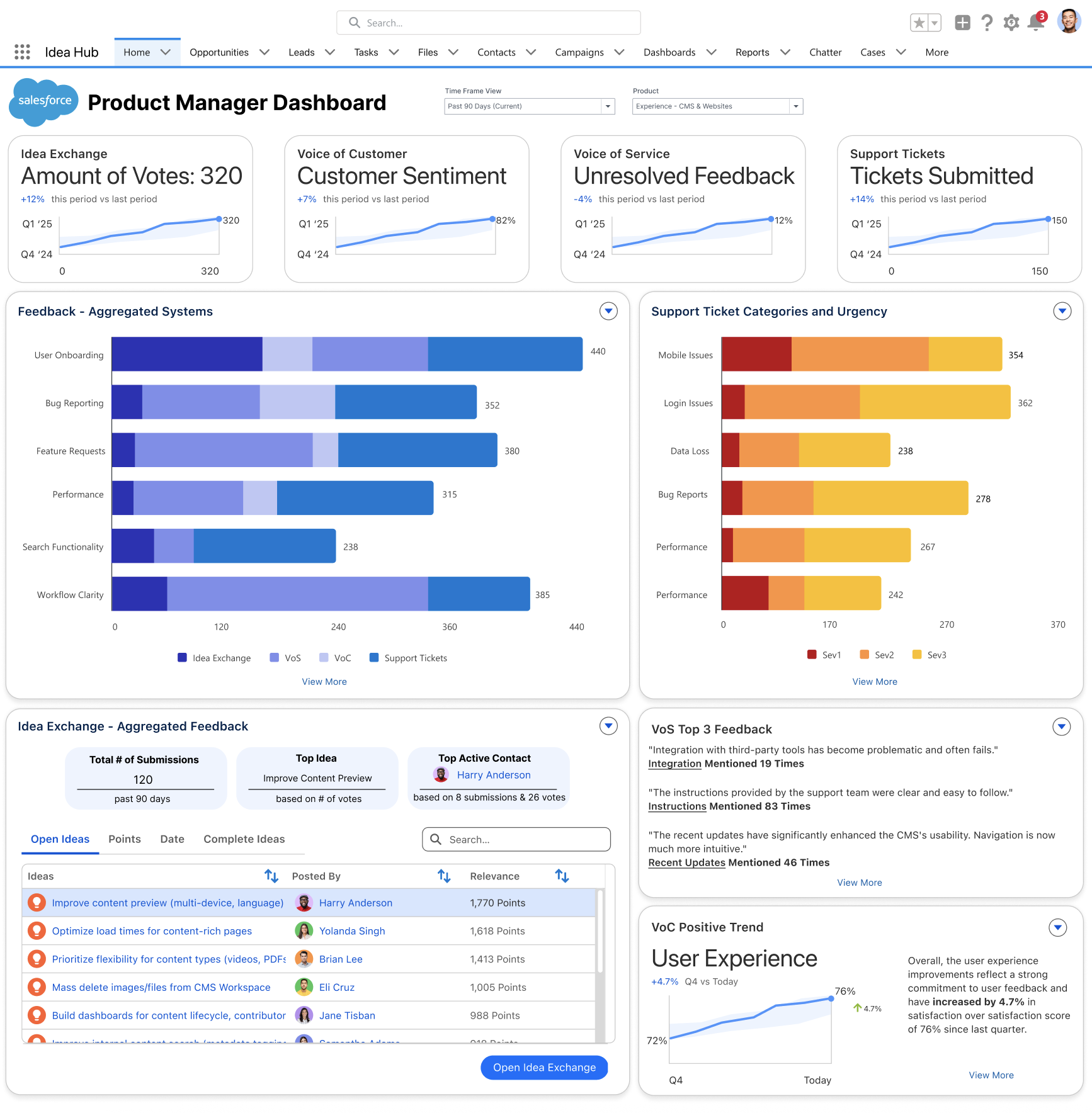

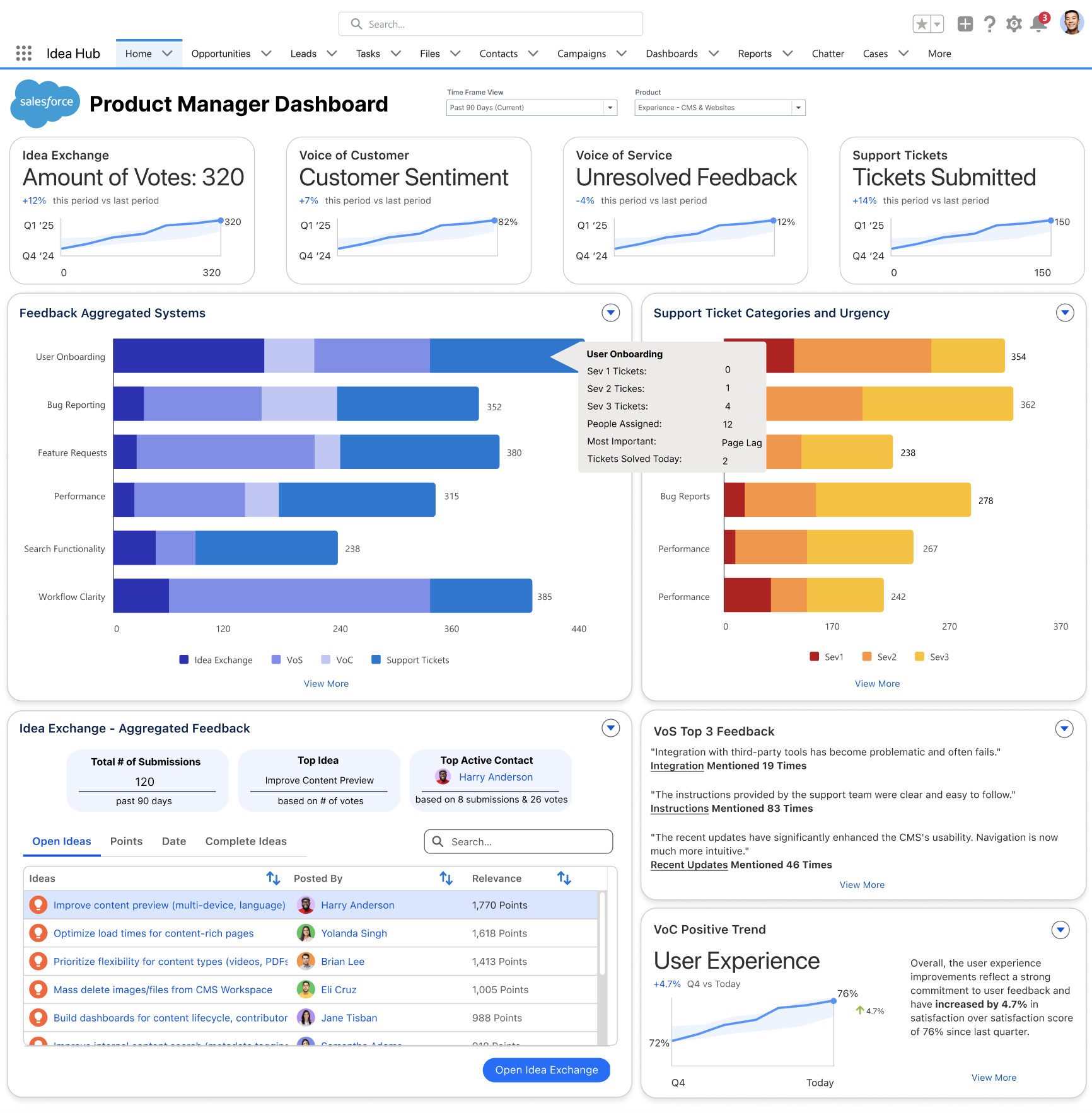
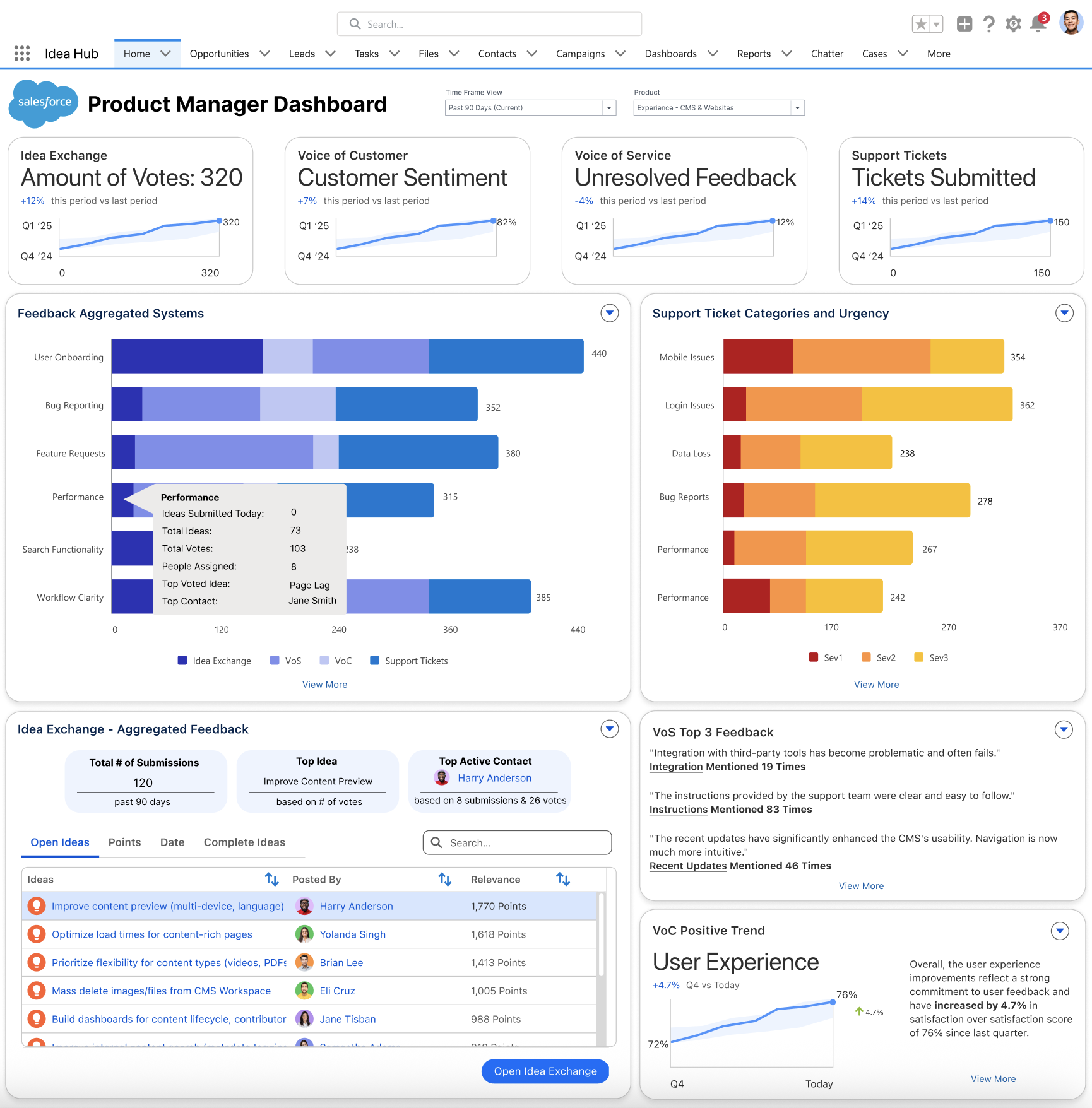
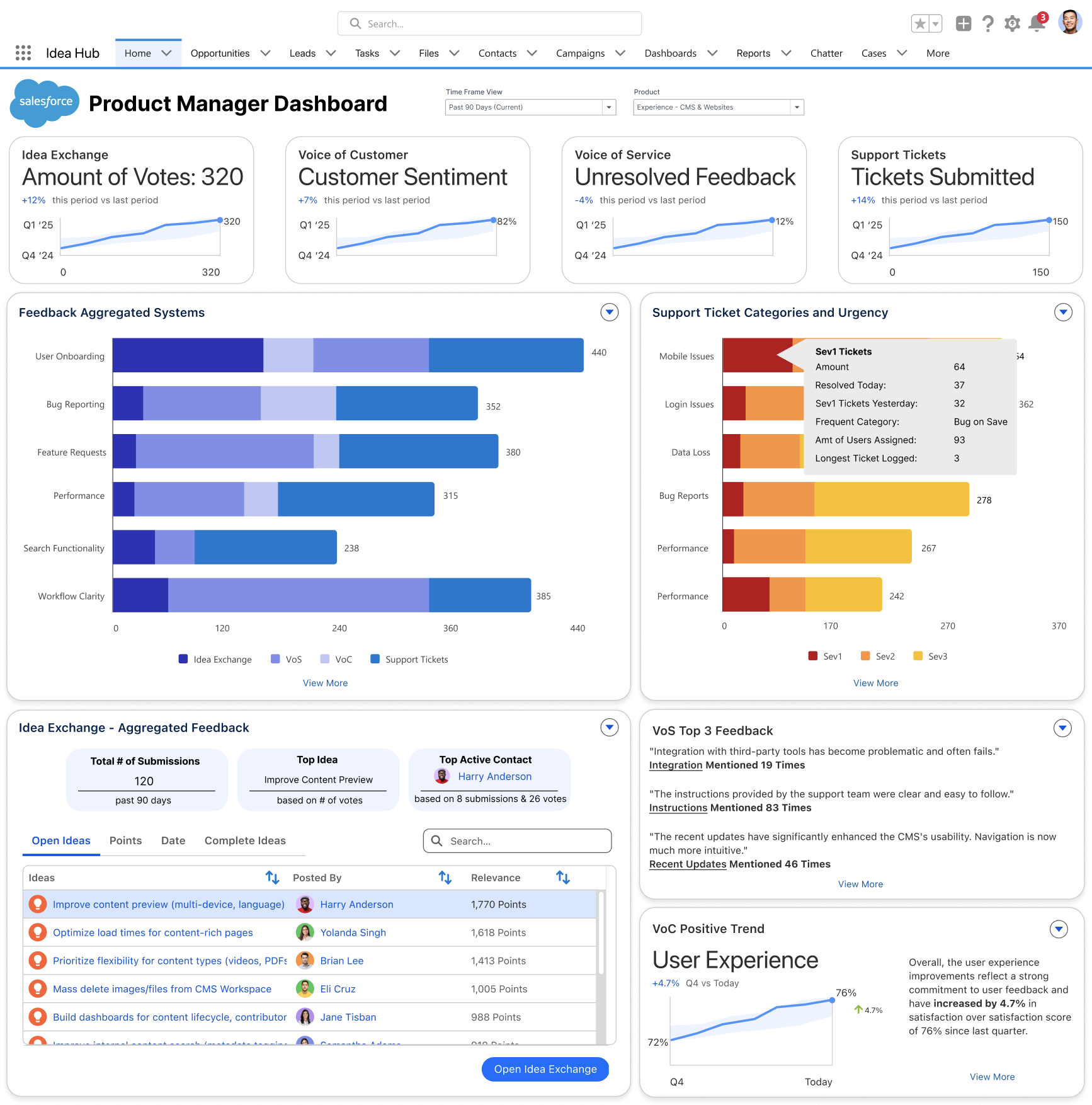
Outcome & Impact
Leadership was aware of the challenges I was facing, which gave me some free rein with the overall design. Ultimately, I had to make assumptions on how the data would be gathered and populated based on the technical knowledge I have learned from the past. For example, potentially we could capture common phrases tracked during meetings, or gather trends based on gains from previous quarters — so that are people more aware of topics that need attention based on a drop in trend percentage overtime. Or, they can be aware that they are improving in certain categories such as Login Issues.
Given to this was an exploratory project in between billable projects, I was eventually staffed on another project and the design was not iterated on further from me. I believe the project has been handed to someone else who was also between projects. However, leadership was ultimately extremely pleased with the design, the ideas I provided, and grateful to get started on an internal initiative that they have wanted to get started on for years to improve Product Manager engagement.
Final Version - Clickable Prototype
